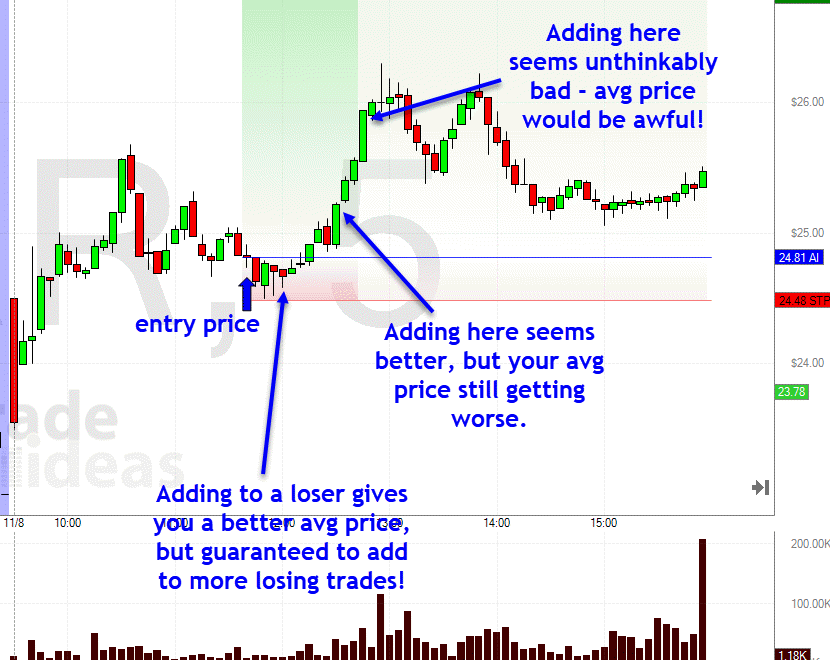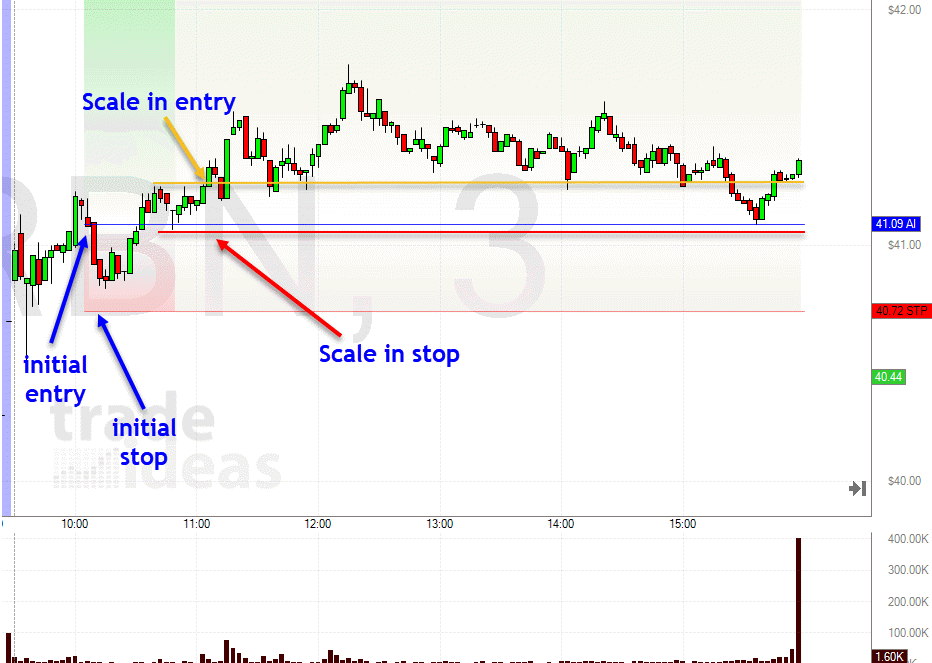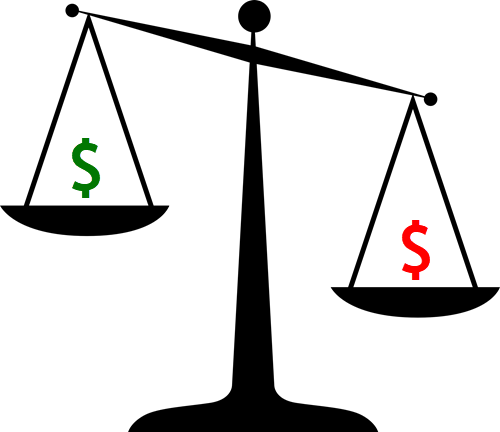I’ve been gap trading for over a decade. One thing I learned a long time ago was it’s human nature to obsess over getting into trades, but the real opportunity for improvement is what you do after you’re in the trade. Once you wrap your head around the basics — sound position sizing, use stops properly, etc — you should come to realize that where you make and lose money is how you handle your big winning trades.
What Is Scaling In?
Scaling in to trades is the process of adding more shares to an existing position to achieve higher profits, presumably after seeing a confirmation signal after your original starter position was taken.
Trading is Simple — Just Add Size to Your Winning Trades!
One thing that you’ll hear a lot of traders talking about scaling into your winning trades — that is, adding size when a trade is going in your direction. To hear them talk about how gracefully they do it makes it seem seductively easy:
and
I’ve looked at scaling into trades a few times very closely with my own trading systems.
My conclusion: scaling into positions is too hard and most traders should not do it and focus on other easier areas to improve. (I do have some caveats at the end of this post.)
For Scaling In to Work, This Must Be True
In order for scaling into positions to make any sense, you have to be able to recognize some profitable conditions AFTER you’re in a trade that you COULD NOT recognize at the time of your original entry. This seems subtle but obvious at the same time — if you could recognize the situation prior to the initial entry just put on more size to begin with! (See caveat at end.)
So let’s say you’ve found a post trade entry situation where you believe you have an even greater edge than you did prior to your entry. It has to be a very unique situation because if your trade is already significantly profitable, then adding to the trade is going to raise your average price to an unacceptable level (let’s focus on long trades only.)
On the other hand, if the price is still close enough to your entry price that scaling in will change it only by an acceptable amount, then you’re more likely to be adding size to trades that will end up as losing trades (this is, of course, very bad.) See this example from a trade that Trade-Ideas Holly AI took in RRR on 11/8/18:

What Happens To Your Original Stop Loss Order?
Let’s say you’ve determined the price point where you think it’s profitable to add size to a trade when the price has gone in your direction. What do you do with your original stop order? Do you move it closer to your new average entry price? If you do, then you’ll be adding size to positions that some of which end up stopping out. If you leave it where your original stop was then you’ve simply increased your risk for this trade and made your average entry price worse.
Perhaps you look for another “setup” in the trade with its own entry price and stop price that is different from the stop price in the original entry. For example, this trade in URBN from 11/8/2018.

If you’re “scaling into” a trade but you’re using a completely different entry price and stop price you’re not really scaling in at all — this is really a trade from a distinct “system” that happens to coincide with a symbol you’re already in. If that’s the case you should treat this as two distinct trading systems and test, trade, and track performance completely independently from one another.
Have a Plan For Managing Your Exit Orders
In any of the scaling in situations I’ve described above, managing the orders in your trading platform is difficult and more prone to costly errors than normal. Imagine the URBN scenario where you’re managing two sets of exit orders from two different entry points. Now — which set corresponds to the first entry and which to the second? What size should the positions be? The additional orders alone add complexity to our position management.
Not only are there more orders to manage, but any mistake we make is magnified since we’re adding size! No room for errors!
There Are Much Easier Things To Do Than Scaling In
Even with the extra complexity that scaling into positions introduces, I’m open to the possibility that it can be done profitably — it’s just nowhere near as easy as some would have you believe.
There’s a whole range of things traders could do to improve their trading that are easier than scaling in — for example, are you giving your winners enough room to trend? Should you use a target order? Should your stop be looser? Tighter?
A better approach to variable sizing would be to try to determine when a system’s edge is the strongest and use a larger trading size when that situation occurs and a smaller trading size when the edge is weaker. You could do this by assigning a score (0–10) to your trades prior to entry time based on some criteria that you’ve researched. This could serve as a “confidence score” and you could use a larger initial size for trades with a higher score.
Conclusion and Caveats
I feel that most traders are better served not scaling into trades. But, there are some important caveats that I want to mention.
- You may have to trade with a large enough size that you simply can’t enter your entire position in one order — in this case look at IB’s Accumulate/Distribute algorithmic order type.
- Longer term overnight trading can give you more time and flexibility to scale in more profitably.
Do you scale into day trade positions systematically? I’d love for you to change my mind on this.

2 comments
Think like a poker player. You start with a starter position. Then you get additional information. If that info is favorable, you add to your bet; if it isn’t, you either hold and fold.
Scaling a trade is the same. Start with a starter position. Get additional info in the form of price movement. If the additional info is favorable, add. If not, exit or at least put a stop in a responsible place.